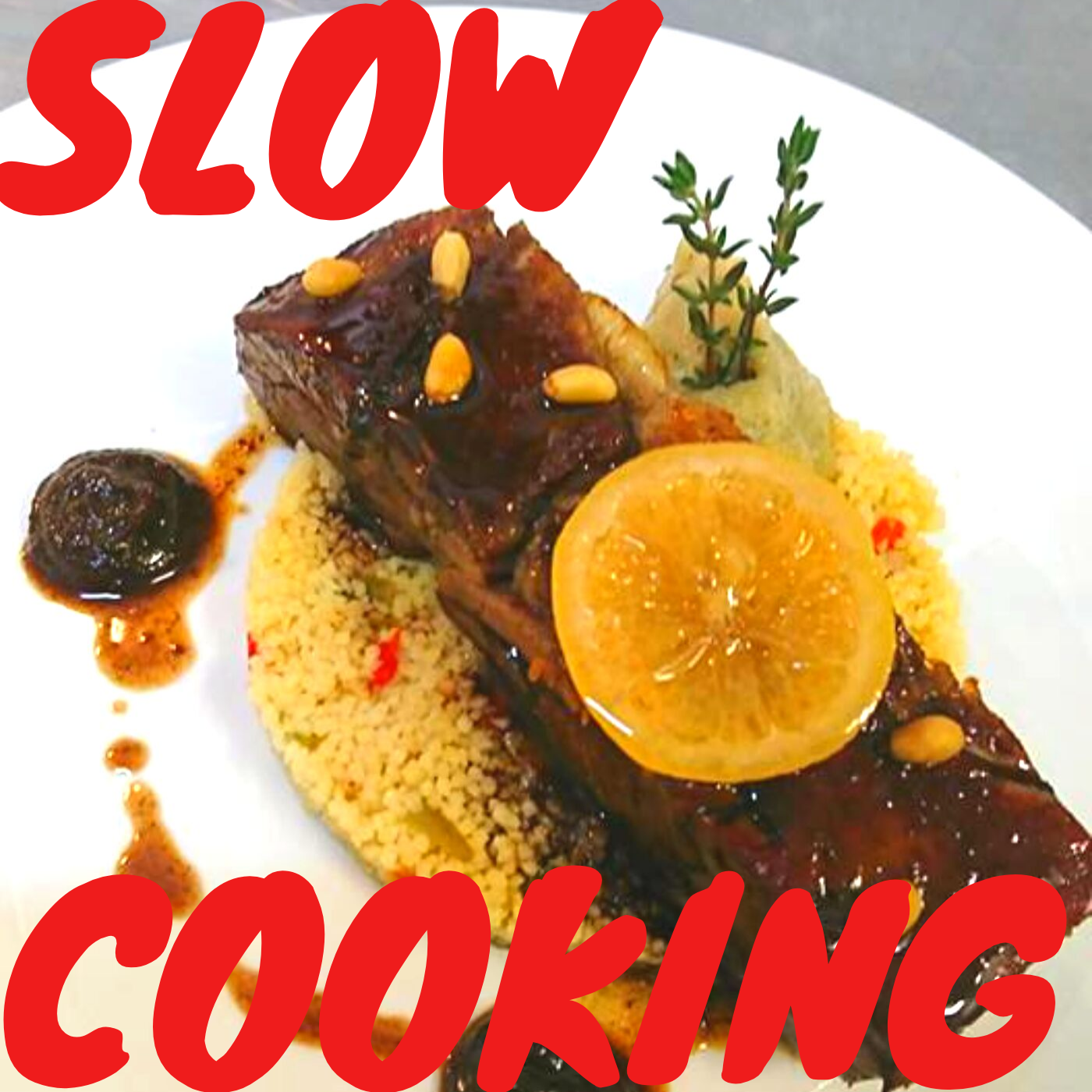
Fare Exchange
Do you have a favourite dish when you come to Tinto? Ask the chefs at TINTO for the recipe – click here
Slow Cooking

Slow-cooking … a revival
Ok Amigos, here we go with a deep dive into slow cooking.
Generally, there are 9 major methods of cooking:
- Boiling
- Steaming
- Baking
- Shallow frying
- Deep-frying
- Grilling
- Stewing
- Braising
- Roasting
The last three [maybe four] are the most suitable for slow cooking. Add to this list ‘sous-vide’ cooking, and you more or less cover all methods used in slow cooking food. Slow cooking can be used for vegetables but is mainly applied to cooking red meat to achieve a very tender end product full of natural flavours.
Slow cooking in some form has been around for as long as humans have been able to regulate and prolong the way they heat food, but the Slow Food movement [contrary to Fast Food] which started in Italy around 1986, is where the modern slow cooking revival started.
Slow Food is a holistic approach to cooking food, focusing on preserving traditional and regional cooking techniques and capturing the nutritious values of the ingredients going into the recipes, most often lost or destroyed when using other methods of cookery. Slow food is now a global organization or movement and has been instrumental in the revival of traditional and almost lost cooking techniques, bringing them back into restaurants all over the world, especially in the fast-paced developed world. The main objectives of Slow Food, apart from counter-acting the Fast Food culture of eating food that is quickly [and often poorly] prepared and consumed on the run, is to take time selecting, preparing and cooking ingredients which are directly sourced from the origin or grower, free of preservatives and ideally grown under organic/bio-dynamic conditions.
With this change in focus came the revival of cooking techniques and as a consequence the re-emergence of old fashioned meat cuts, which had almost disappeared from the butcher shops displays. Not so long ago it was all about steaks and short order cuts, but now we see again cuts like brisket, cheek, oxtail hangar, chuck, shoulder, ribs, pork belly, shanks and others including offal like kidney, tripe and heart on restaurants menus. All these cuts require slow-cooking techniques.
To keep this discourse into slow cooking concise, let’s look at one particular cut of meat cooked in a particular way. A lamb shoulder for instance can be slow grilled, slow stewed, slow-braised, slow-roasted or cooked in a sous-vide water bath. The description that follows is one of the ways we apply slow-cooking at Tinto. It’s time-consuming and involves several methods but the end product is absolutely delicious. Technically the meat is braised but done in sous-vide style pouch in a steamer.
The shoulder of lamb can be prepared either de-boned or on the bone. De-boned is a little easier to handle, but at Tinto we cook it on the bone as this method imparts extra and essential flavours into the meat. If you want to follow this recipe you also need to have a vacuum-sealing machine.
Tinto’s Cordero Arabesque
- Rub the whole lamb shoulder with sea salt and freshly ground black pepper then drizzle some olive oil over and rub in again. Cut some small incisions into the meat and push cloves of garlic into the cavity
- Put the whole shoulder into a vacuum pouch [sous-vide pouch] and add red wine, lamb stock, bay leaf, chopped celery, leek or onion and carrots
- Seal the pouch in a vacuum-sealing machine. At Tinto we then steam it in a steamer tray for 24hrs at 65 deg C in our combi oven. Alternatively, you could cook this pouch also in a sous-vide water bath for the same time and at the same temperature
- Once cooked cool down, cut the pouch open, take out the meat and reserve the liquid. You should be able to simply pull the bone away from the meat.
- If you want to use the meat immediately you can pull the meat into strips or cut it into sections. One shoulder should provide 4-6 portions. Trim away any excess fat if you think necessary.
- You can either strain the liquid and reduce it down further, or if you would like to you can also take out the bay leaves and blend the liquid and end up with a more rustic sauce
- At Tinto [as we do about 12 shoulders at a time] we take the meat off the bone and push it into a square or rectangular tray, then we use an identical tray and put it on top, weighed down with 10kg of rice or other weighty items
- This goes into the fridge overnight. The next day all excess fat has been squeezed out and solidified at the top. Take off the fat and portion the meat to serve (approx 150-160g per portion)
If you don’t have a vacuum-sealer nor a combi oven or sous-vide cooker, then you can cook the shoulder, using the same ingredients and preparation mentioned above, by assembling everything [cut vegetables at the bottom and meat on top] into a pot with a tightly sealing lid. You can either cook it on the stovetop on very low heat [just below simmering] or if the pot is made entirely out of metal, in the oven at 80 deg C for about 8-10 hrs. This should give you a similar result. You can call this dish a slow-braised lamb shoulder.
The advantage of cooking in vacuum pouches is, that there is no loss in weight through evaporation whatsoever. What you put in is what you get out. Furthermore, by completely sealing the meat and vegetables, the flavours intensify. Slow cooking retains the flavours of the ingredients and it is more easily digested.









